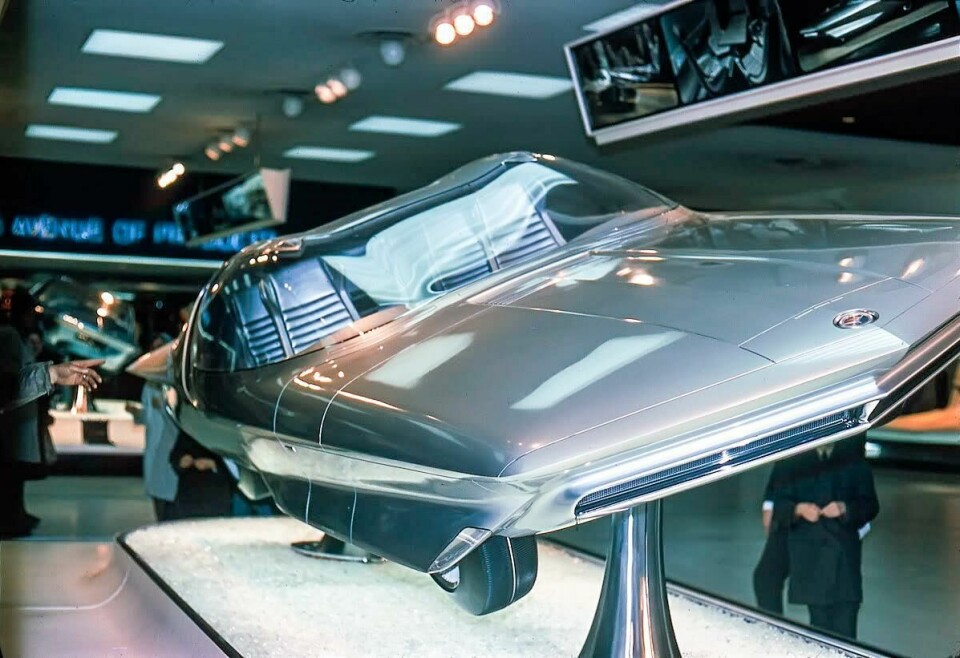
Concept Car of the Week: General Motors Firebird IV/Buick Century Cruiser (1964/1969)
The concept car that believed you only live twice
At the 1964 New York World’s Fair, General Motors resurrected its Futurama show that was such a hit back in 1939. It updated the themes and exhibits, and introduced three new futuristic concept cars to attendees.

The first was an in-town runabout, a three-wheeled compact car with its own built-in shopping trolley. The second was a luxury coupe – the GM Stiletto -a large personal luxury car that predicted, in spirit at least, the Riviera/Toronado/Eldorado models to come a few years later. And, lastly, GM introduced a four-passenger cruiser, a luxury car for the new interstate highways being constructed around the country.

This latter model was called the Firebird IV, and it drew heavily from the series of Firebird concept cars that had been introduced in the 1950s and early 1960s. Those cars were the epitome of aerospace automotive design. Large tailfins to stabilise the car at high speeds, turbine engines similar to a jet, and bubble cockpits with aircraft-type controls and autopilot were all design features of the first three Firebirds.

A walk around the Firebird IV showed that its design was more sedate. Gone were the array of vertical fins that festooned its predecessors. The side fins or winglets had been reduced to skag fins, similar to what was seen in the 1961 Cadillac sedans and coupes. The glass bubble tops had been replaced with a more conventional canopy.

Still, plenty of futuristic elements remained. The wheels were hidden underneath the body or the aforementioned skag fins. Headlights were relegated to a panel underneath the front of the car – all but invisible to the casual glance. The doors were a two-part affair, with a canopy that lifted and swung forward, allowing the lower doors to glide open. At the rear, the former tailfins had been consolidated into a single delta wing assembly that also contained the taillights. Below this assembly, turbine exhausts completed the aircraft theme.

Once one stepped under the glass canopy and into the interior, high-backed bucket seats with cradling headrests and armrests swivelled in greeting. There were individual comfort controls on each seat. The driver’s seat also had pistol grips on each arm for steering and throttle control, and a control panel on the door for interior controls.

Forward, where the IP should have been, there was a blank panel, but a large centre console with a scrolling progress map charting the journey – a primitive form of GPS. A punch card – jurassic computing here - would instruct the on-board computer where to pilot the car, which also depended on highway transponders for navigation. Finally, the ultimate in accessories, a refrigerator and television, were included, essential for those cross-country excursions.

After the World’s Fair ended in 1965, the Firebird disappeared, along with its siblings. But it would reemerge for the 1969 show season, named the Buick Century Cruiser, painted a metallic blue and now with a mildly updated interior. Again, the emphasis was on portraying a car that would cruise on autopilot across the broad expanses of the country between cities. Automotive enthusiasts were not fooled by the new paint job or the mild interior refresh, but the car still had enough futuristic elements to garner attention, especially from those who could not attend the World’s Fair in New York five years prior.

After making the rounds at the car shows that year, the Century Cruiser/Firebird IV was retired to the GM collection where it was stored until its destruction sometime in the 1980s. Its styling was never an impact on GM production models. Indeed, their design direction had already shifted by the time of the 1964 World’s Fair.

But the technologies and questions asked about the implementation of autopilot systems would remain, and now have prominence with the advancement of mapping software, sensors and other technologies that make up the modern car. The Firebird managed to live twice in the 1960s, but its predictions about the future of automotive driving may yet find another life in the autonomous car of tomorrow.




